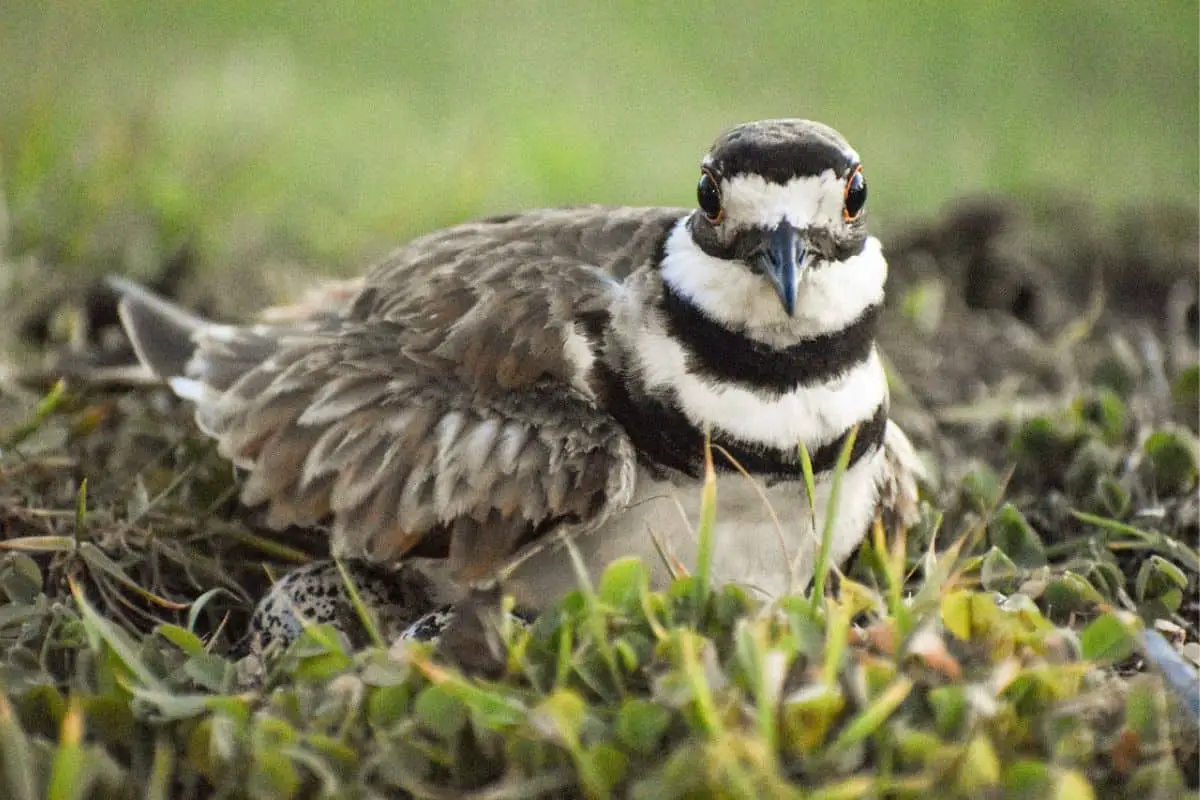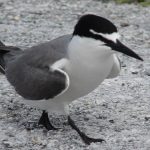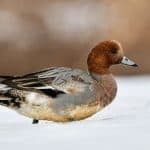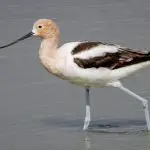Common Name: Killdeer
Scientific Name: Charadrius vociferus| Size | Diet | Range in Hawaii | Status in Hawaii |
|---|---|---|---|
| 9 in. - 11 in. | insects, spiders, earthworms, and crustaceans | Kaua'i, O'ahu, Maui, and the Big Island | Least Concern |
The Killdeer (Charadrius vociferus) is a charming and charismatic bird species that is known for its distinctive appearance and unique behavior. With its warm tawny coloration and far-carrying call, this bird is a common sight in many parts of North America.
While it is typically found in the continental United States, the Killdeer has also been known to make appearances in other parts of the world, including Hawaii. In fact, the Killdeer is a non-breeding visitor and vagrant to Hawaii, with individuals typically arriving in the fall and remaining for the winter months.
This bird species has been spotted on multiple Hawaiian islands, including Kaua’i, O’ahu, Maui, and the Big Island. In this article, we’ll take a closer look at the Killdeer, including its physical characteristics, behavior, and habitat preferences, as well as its presence in Hawaii.
Killdeer
Appearance
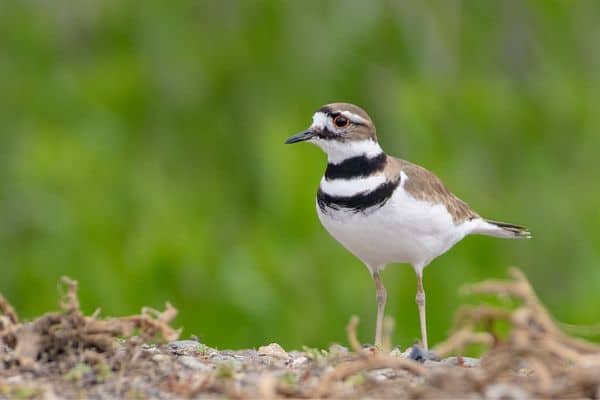
The Killdeer is a medium-sized bird known for its distinct appearance. It measures approximately 9-11 inches (23-28 centimeters) in length. It has a brownish upper body with a white underbody, marked by two black bands across its chest. Its head is adorned with a white forehead and a brown crown. The Killdeer also features large eyes and a long, slender bill perfectly suited for its foraging habits.
Diet
The Killdeer has a diverse and adaptable diet. Primarily insectivorous, it feeds on a wide range of small invertebrates such as insects, spiders, earthworms, and crustaceans.
It uses its long bill to probe the ground and shallow water, searching for prey. Additionally, Killdeer may consume small amphibians, reptiles, and even seeds and berries on occasion. This flexible diet allows the Killdeer to thrive in various habitats, including grasslands, shorelines, and agricultural fields, where it can find an abundance of food resources.
Nesting
The Killdeer is known for its unique nesting habits. It builds its nest directly on the ground, creating a shallow depression in gravel, soil, or even on pavement. The nest is often placed in open areas with good visibility, such as fields, pastures, or shorelines.
The female Killdeer typically lays a clutch of four eggs, which are well-camouflaged and blend into the surrounding environment. Both parents take turns incubating the eggs and guarding the nest, using various distraction displays to divert attention from the nest and potential predators. This nesting strategy allows the Killdeer to adapt to a variety of habitats and successfully raise its young.
Behavior
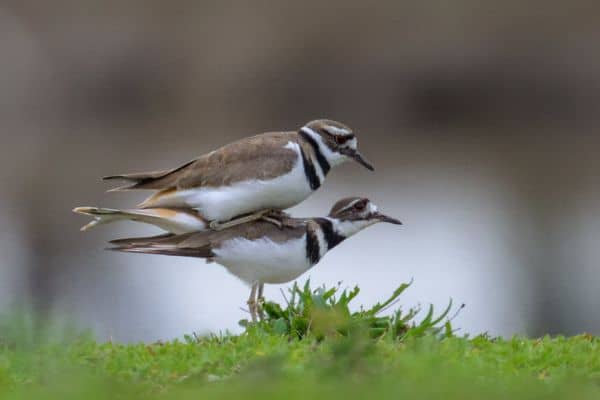
The Killdeer exhibits fascinating behavior patterns. It is highly vocal, emitting distinct calls that resemble its name, “kill-deer.” Killdeer are known for their elaborate courtship displays, which involve aerial acrobatics, wing-flapping, and vocalizations.
They are agile runners and can swiftly navigate through their habitat, often stopping suddenly to forage for insects and small invertebrates. When threatened or when their nest is in danger, Killdeer perform a broken-wing act, feigning injury to distract potential predators away from their vulnerable offspring. This species also engages in nomadic behavior, moving across various habitats in search of suitable food sources.
Habitat
The Killdeer is a versatile bird that inhabits a wide range of habitats. It is commonly found in open areas such as grasslands, meadows, agricultural fields, pastures, shorelines, and even urban areas with suitable nesting sites.
Killdeer prefer habitats with low vegetation, gravel, or sandy substrates, as these provide ideal conditions for foraging and nesting. They are often seen near water sources, including ponds, streams, and shorelines. Their adaptable nature allows them to thrive in both natural and human-altered landscapes, making the Killdeer a familiar sight in various environments across its range.
Range
The Killdeer is a non-breeding visitor and vagrant to Hawaii. While it is typically found in the continental United States, this bird species has been known to make occasional appearances in Hawaii, particularly during the winter months. The Killdeer has been spotted on multiple Hawaiian islands, including Kaua’i, O’ahu, Maui, and the Big Island.
Conservation Status
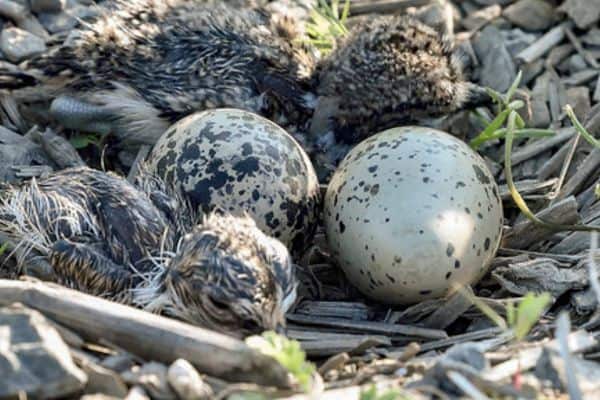
The Killdeer is a species of bird that is currently listed as a species of least concern in terms of conservation status. The International Union for Conservation of Nature (IUCN) has assessed its population as stable and widespread throughout its range.
Killdeer populations have been relatively resilient due to their ability to adapt to a variety of habitats, including agricultural areas, grasslands, and open landscapes. They are also capable of utilizing disturbed habitats such as construction sites and gravel pits for nesting.
While the overall population of Killdeers remains stable, they may face localized threats such as habitat loss and degradation due to urbanization, agriculture intensification, and industrial development. Conservation efforts focused on preserving and managing suitable nesting habitats, reducing disturbance, and raising awareness about the importance of protecting these birds can contribute to their long-term conservation.
Interesting Facts
1. Master of distraction
When a predator or intruder approaches the Killdeer’s nest, it often employs a distraction display known as the “broken-wing act.” It pretends to have a broken wing, fluttering away from the nest to lure the threat away and protect its eggs or chicks.
2. Camouflage experts
Killdeer eggs have a speckled appearance, blending in with the surrounding environment. This camouflage helps to protect the eggs from potential predators by making them less visible.
3. Agile on the ground
Killdeers have long legs and a slender build, allowing them to be incredibly agile runners. They can swiftly navigate through their habitat, chasing after insects and other small prey.
4. Courtship rituals
Male Killdeers engage in elaborate courtship displays to attract females. These displays involve aerial acrobatics, wing-flapping, and vocalizations, showcasing their fitness as potential mates.
5. Nomadic nature
Killdeers are known for their nomadic behavior, often moving around in search of suitable habitats and food sources. They can be found in a variety of open areas, including grasslands, shorelines, agricultural fields, and even urban parks.
Frequently Asked Questions
1. Do Killdeer really have broken wings?
No, when Killdeer perform their “broken-wing act,” it is a clever distraction display. They pretend to have a broken wing to lure potential threats away from their nest or chicks.
2. Why are Killdeer called Killdeer?
Killdeer are named after their distinct and loud call, which sounds like “kill-deer.” It is their most recognizable vocalization.
3. Are Killdeer monogamous?
Killdeer exhibit polygynous breeding behavior, where males often mate with multiple females during a breeding season. Males take on the responsibility of incubating the eggs and caring for the chicks.
4. Can Killdeer swim?
While Killdeer are not adapted for swimming, they can wade in shallow water. They primarily inhabit terrestrial habitats and are known for their agile running abilities.
